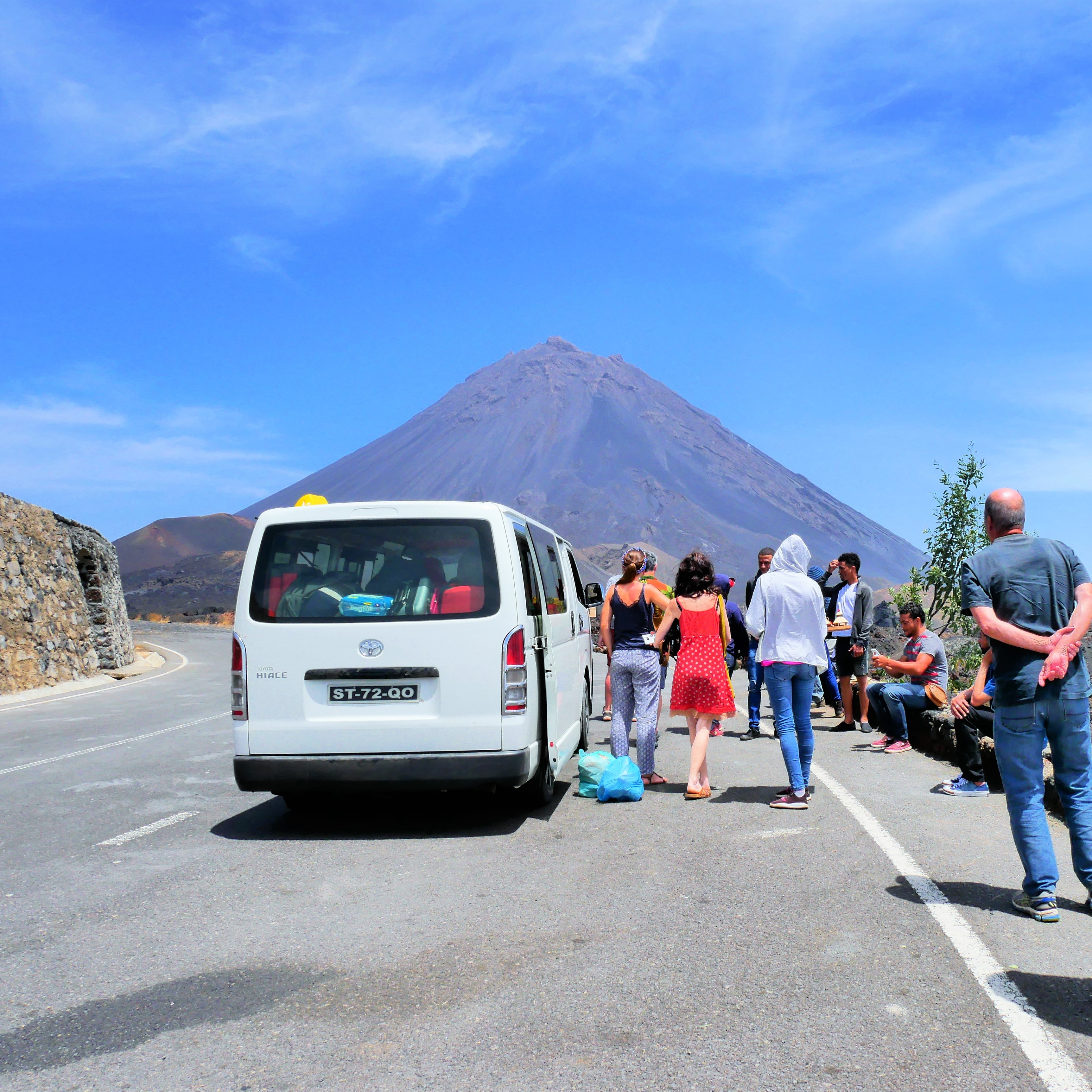
This article is about land transportation in Cabo Verde as opposed to flights and ferries. I mostly discuss taxis and the little minivans/pickup trucks, collectively known as ‘aluguers’. You can also rent vehicles like scooters/quads/4WD cars on some of the islands. Since this is a hitchhiking blog, I also included some information on hitchhiking. I’m still planning more dedicated articles on hitchhiking in Cabo Verde. This is all the information I’ve gathered on land transportation in Cabo Verde over 88 days and by visiting 7 out of 9 islands.
Contents
The Reality On The Ground
Cabo Verde is an archipelago in the Atlantic Ocean off the coast of Africa. It’s one of the most well-off countries in Africa, but that doesn’t mean the country doesn’t have its struggles. On the ground, I quickly realized that privately owned cars are the exception, not the norm. I don’t have exact numbers, but my spidey sense says that only 30% of vehicles are privately owned, as opposed to 70% which are taxis, public transit vehicles (aluguer), company trucks, and government-owned vehicles like city buses (in Mindelo and Praia) and school buses.
Since trucks and government-owned vehicles generally won’t stop for you, the three types of vehicles you will mostly be dealing with are taxis, public transit vehicles, and privately owned vehicles. Taxis have different colors on almost every island: Sal is light blue and yellow, in São Vicente they’re often old white Mercedes types, and in Fogo, they can be yellow (São Filipe) or red+green (Mosteiros). If you’re taking a taxi, always ask for the price before you get in.
Public transit vehicles are locally referred to as aluguers. From now on, I’ll also refer only to them as aluguers. They come in two types: Hiace (pronounced as “Yasi”) and Hilux. These words refer to the type of Toyota vehicle. Hiaces are vans where you sit inside, meaning you’re protected from the sunshine. But the benches are not very far from each other. This means that your knees might poke into the bench in front of you, or you’ll be forced to (man)spread in order to fit. This might cause great discomfort, especially for tall people . You might also feel a knee poking in your back through your back support.
Hiluxes are pickup trucks in which you will most likely sit in the back (as opposed to the cab), on a bench. Hiluxes are less comfortable seat-wise but tend to be emptier and have more legroom. And oh, a stable supply of fresh air! Sometimes they have a roof to protect you from the sunshine, but they can also be roofless. Hold on to your hat!
You always pay for transportation after you’ve arrived at your destination, usually only when you’ve already exited the vehicle. The people trust that you won’t run away. You pay the driver through the window and it’s common to thank them and say bye.
Public Transit
Taxi Pricing
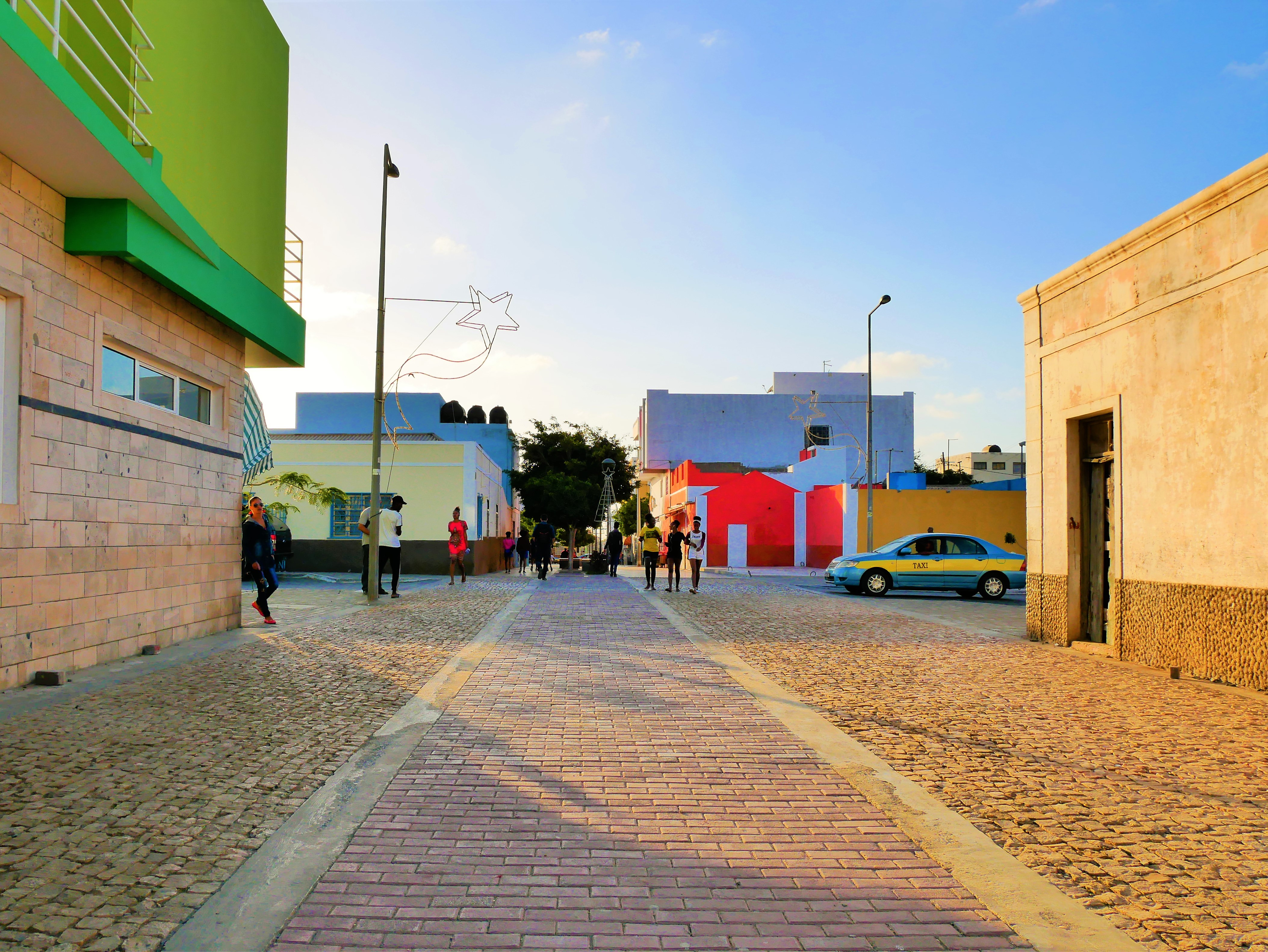
A blue and yellow taxi typical in Sal. Spotted near the pedestrian zone in Espargos.
Cabo Verde has plenty of taxis roaming around on the paved roads. They’re neither cheap nor very expensive. But as anywhere around the world, taxi drivers prey on your lack of local knowledge; you pay them a higher price so you don’t have to put in any effort to figure out the way. If that’s your thing, this is of course perfectly fine! This is the pricing of taxis from some of the airports/ports:
- São Vicente: In Mindelo, you will seldom pay more than 150 or 200 CVE to get anywhere within the city. To get to the Cesária Évora International Airport from Mindelo costs 1000 CVE for a ride of 10 kilometers (15 minutes)
- São Nicolau: To get from the Preguica airport in São Nicolau to Tarrafal, you’ll pay 1500 CVE for a distance of 31 kilometers. (45 minutes).
- Sal: Going from Amílcar Cabral International Airport to Santa Maria will cost you 1500 CVE for a ride of 17 kilometers (15 minutes).
- Fogo: Going from the airport to São Filipe will cost you 300-400 CVE for a distance of 2 kilometers (5 minutes). To/from the harbor costs 300 or 400 CVE for 9 minutes for 4.5 kilometers.
- Santo Antão: No idea, I took aluguers between the towns.
- Brava: We didn’t take taxis on Brava, just aluguers from the harbor in Furna to Nova Sintra. Know that Google Maps doesn’t even have the road between the two yet. Shame! This is why it’s so important to have an Open Street Maps-based app on your phone while traveling in Cabo Verde!
- Santiago: Going from Nelson Mandela International Airport (RAI) to the center of Praia (for example Platô or Terra Branca) will always cost 1000 CVE even though it’s less than 6 kilometers (10 minutes).
- Maio: I haven’t been to this island and neither will I go here, but please comment if you’ve been here!
- Boa Vista: Again, I haven’t been to this island and neither will I go here on this trip, but please let me know how much you paid for a taxi from the airport/port!
Many tourists prefer to pay a taxi driver for a whole day of being driven around, often arranged through their hotel. The advantage of this is of course that you don’t really need to figure anything out, you can stuff up to 4 people in a taxi, and you can still see things even if you have difficulties walking or are injured. The disadvantages of this are that you A) pay a fuckload B) you see only what your taxi driver considers worth seeing C) might make you feel rushed to not get out and enjoy the places you visit and D) might still get into an argument with your taxi driver about the price if you add/change the route to see more things. You might want to consider renting a vehicle for that price.
That being said, I have never paid for a taxi for the whole day in Cabo Verde, and neither would I ever really consider doing that. If you did this, please comment on the article to tell us where you did this, how much you paid, and which stops you made!
Aluguer Pricing
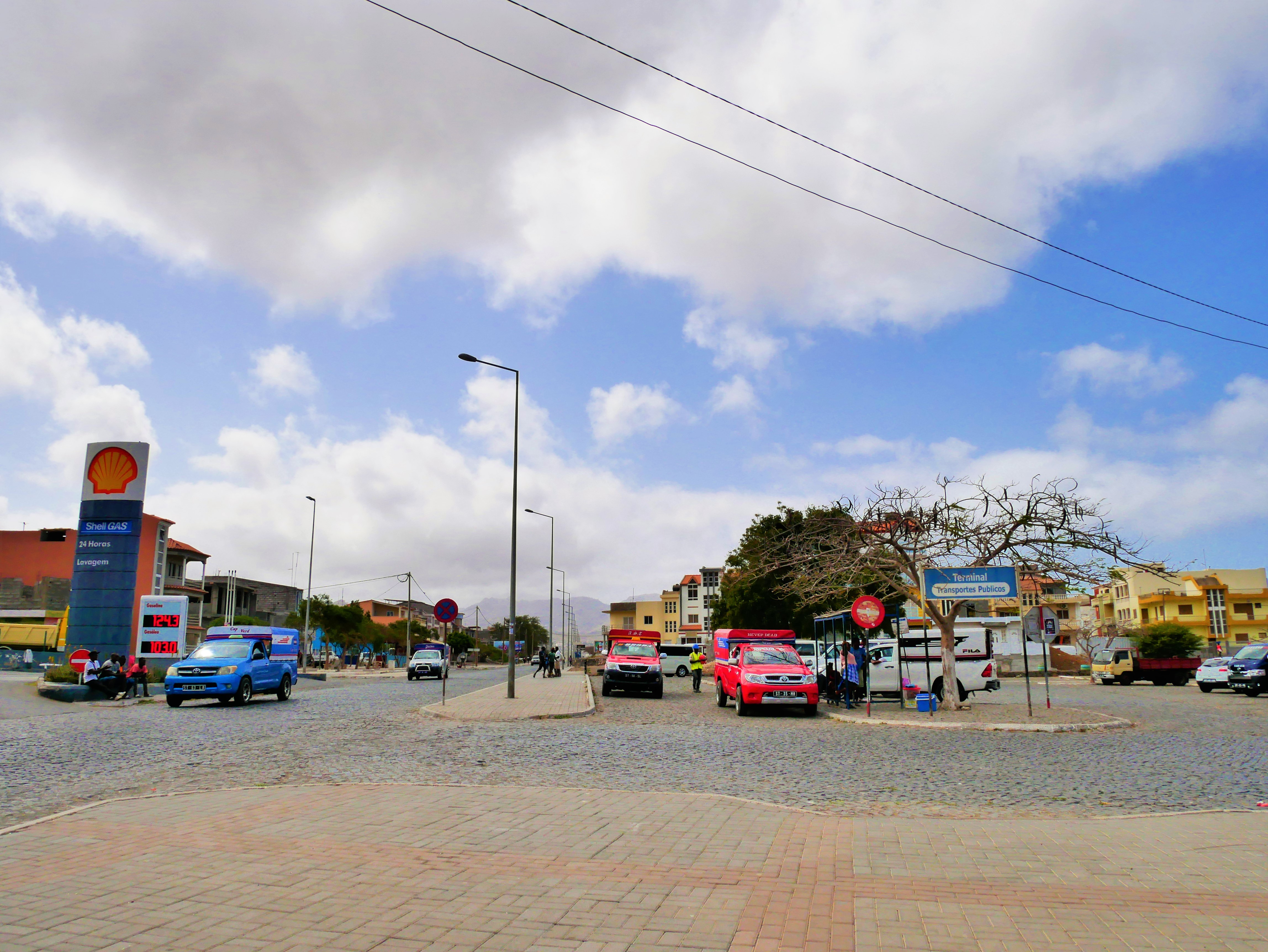
The terminal of aluguers in Tarrafal (Santiago Island) opposite the Shell. Santiago’s public transit is a bit more organized than on the other islands. To Praia, you’ll be dropped off at the terminal called Sucupira Market.
The pricing of aluguers is similar, whether they’re Hiace or Hilux. It might be that a Hilux is slightly cheaper, but not so much that it’s worth your time to wait for this specific type of vehicle to turn up. Aluguer drivers may give you the price as per person, or in total. If you’re traveling together with someone, make sure you won’t end up paying double by asking “Cada?” (= each).
I’ve been gathering data points for aluguer distances, trying to come up with a ‘what to expect’ pricing scheme. It’s listed as a per person price. The formula for aluguers is this:
- 100 CVE per 7 kilometers of road distance if the road is paved with smooth-ass asphalt
- About 100 CVE per 5 kilometers road distance if the road is paved with the volcanic cobblestones
- 100 CVE per 5 kilometers road distance if the road is paved with smooth-ass asphalt, but also very steep and curvy
- 100 CVE per 4 kilometers road distance if the road is paved with volcanic cobblestones and is very steep and curvy and potentially skinny
- The price is lower if it’s a governmentally subsidized kind of vehicle to a hard-to-reach community where no sane aluguer driver would drive to unless they felt a moral duty, or got paid a lot. Case in point: Porto Novo to Tarrafal de Monte Trigo (50 kilometers, hours of driving) for 700 CVE one-way (i.e. 100 CVE per 7 kilometers). This route can only be done by Hiluxes, which have powerful 4WD
Because taxis are so much more straightforward than aluguers, I’ll explain some more about the aluguers here:
Understanding Aluguers
Warning! When aluguers become taxis
You can pay an aluguer to just leave with you right now by paying the price for all the seats (and there are more seats than meet the eye). In that case, it’s basically an oversized taxi. If you’re white and/or a tourist, aluguer drivers may assume that you want them to be a taxi. That’s why if you’re the first people at a Hiace, you must clear up the air and say you want to pay for “aluguer” (in the Barlavento islands) or “aluguer coletivo” (in the Sotavento islands). You can confirm this by asking “Não é um taxi?” and establishing the price “Quanto custa?”
FAQ
Where will my luggage go?
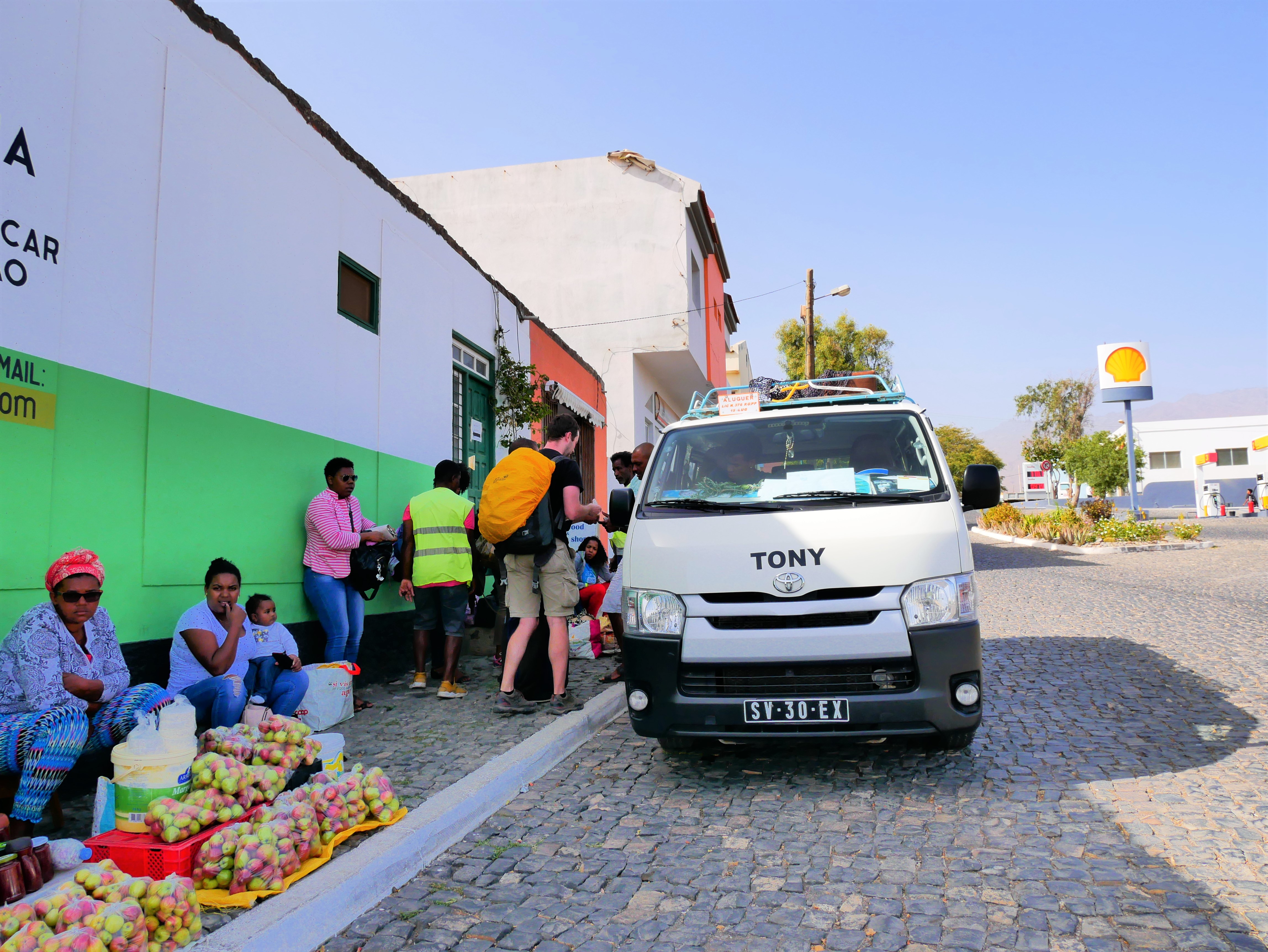
The ‘Tony’ Hiace in Porto Novo, Santo Antão. Tony is the name of the driver. Tony drives the route between Ribeira Grande and Porto Novo on Santo Antão. He has a roof rack where your luggage might go. Our accommodation hosts in Ribeira Grande arranged for Tony to pick us up but still pay the aluguer price (400 CVE). We drove through Ribeira Grande for another 15 minutes before driving off to Porto Novo, a trip of 50 minutes.
If your Hiace has a roof rack, the driver may convince you to put your stuff up there. These contraptions are usually quite good at keeping your stuff attached while swooping through a tight turn. Lateral G-force won’t easily win. Outside the rainy season, there’s little worry about your stuff getting wet. Stuff might get dusty if you’re going to some area with unpaved roads (e.g. Tarrafal de Monte Trigo, Santo Antão island).
That being said, I understand why you’d be uncomfortable with your stuff being outside. I only travel with hand luggage, which means I can squeeze my (still huge) backpack onto my lap and not deal with this. If you have more than just hand luggage, you can triage what goes on top and what you keep with you inside the vehicle. You could also try to get a Hiace without a roof rack to avoid dealing with this altogether, but you might need to pay for a seat.
When will my aluguer finally leave?
If you’re in a Hiace waiting for it to leave and there are just one or two seats left, the driver might not leave at all until someone occupies that last seat. You can offer to pay for the last seat(s) to make the vehicle leave right away. Also, if you have a lot of luggage that can’t be on your lap, you can use a seat to stack your suitcases or whatever and again, you have to pay for that seat as if it were a person. If you pay for an empty seat, you can, of course, spread your legs wide and put your bag on that seat as if you own it – because now you actually temporarily own it!
Since these drivers just don’t have a schedule or a time of arrival, you are at the mercy of when the driver finds the vehicle full enough. It’s the driver’s privilege to waste your time. If being on time is important to you, don’t take aluguers. You might try it a few times and then figure out that you’d rather just pay more to not have to deal with the mental exhaustion of speculating whether you’ll leave today.
Sometimes, the aluguer drivers start driving around town with you in the vehicle to hustle more people inside. You may make the same rounds through town over and over and over and over and over until you’ve gone barking mad. The CIA doesn’t know yet about this torture technique (you’re welcome!). Sometimes, someone actually joins the vehicle and you might be getting closer to actually leaving. At other times, you and the other passengers should start a revolt against the regime and hope the sounds of wailing will lead to the driver finally leaving. This whole activity proves that you’re not actually paying the fare for gas. It’s so wasteful and I hate it.
Other times, the vehicle is very full and the driver turns on the engine. You think you’ll be leaving soon, but no. They’re just announcing to the world that their vehicle is almost ready to go. You may still wait for half an hour in the vehicle while the engine is running like they’re driving in Siberia in winter. It’s so wasteful and I hate it.
You see, taking an aluguer is basically combining all the disadvantages of hitchhiking (long waiting times, no guarantees of arrival) with all the disadvantages of public transport (you pay money, it’s crowded, other people might be smelly or get motion sickness). But if you’re not willing to sometimes catch an aluguer, you will simply not see anything of the islands, muahahaha!
Motion sickness
Trigger warning: this piece of text might make you feel nauseated. There are a few graphic descriptions in here. Click here to skip to the next heading!
Do you get motion sick easily? Then maybe avoid the Hiluxes altogether (since you’re looking backward mostly). If you can, ask the drivers of Hiluxes or Hiaces to sit in the front seats (there are two seats next to the driver there). These seats are usually reserved for the elderly and good friends of the driver, but you can ask to sit there. This might actually also solve another bunch of the problems of taking aluguers that I’ve mentioned before. I’ve only sat in the front middle seat once for like 5 minutes, and I hated it because the rearview mirror blocked my view. Moreover, some optional fake bunny tail dangled in front of my eyes.
I don’t get car sick, but my partner sometimes does. So I’m not speaking from direct experience.
Cabo Verdeans aren’t immune to motion sickness. Considering that it’s an archipelagic nation where many people live off fishing and nearly everyone has been in a boat at some point, they are very sensitive to motion sickness. I’ll talk about the ferries in a different article, so now I’ll focus again on land transportation.
I’ve seen many Cabo Verdeans dry-heave, retch, and vomit during my 88 days here. Being on a fancy smooth asphalted road didn’t stop it. My theory is that people don’t really know that eating before being in motion is usually a bad idea, and being hungover even worse. I always recommend to sensitive people not to eat ANYTHING for several hours before going in motion. The short-term gains of not feeling hungry don’t compare to the absolute shit feeling you’ll have when you vomit it all up, soil yourself, and start a chain reaction of other people vomiting.
It doesn’t help that the aluguers often leave from the market (e.g. Mercado Sucupira in Praia), where vendors try to sell anything to the waiting passengers in the aluguer. From panties, jewelry, and make-up to fresh goat cheese, fruits, and herbs. Since you don’t consume these in the vehicle, these aren’t the problem. What is the problem? Snacks. Scrumptious, slightly sketchy snacks. Often meaty, fishy, or salty, or extremely sugary, sticky, and sweet. And the passengers will buy that stuff and eat it in the vehicle right before departure (because no one knows when departure really is). Then they get nauseous.
My tip? If the front seats are taken, try to sit right behind the driver. He won’t puke out the window. If you’re sitting behind someone dry-heaving, get them a plastic bag, alert the driver (who usually doesn’t care), or prepare yourself to dodge. If someone in front of you is puking out the window while the vehicle is driving at high speed, some of the vom might catch the wind and fly back inside the vehicle. Into your face. Consider it a lesson about how parenthood would be.
What suspicious packages travel with the aluguers?
You might notice that sometimes: your aluguer will stop for someone by the road, and then that person hands something to the driver. They exchange a few words and a nod. You drive off again. It might be a child, it might be an adult. What they hand over to the aluguer driver might be a package, or it might be a plastic bag or a letter. Who knows. Sometimes just a few kilometers later, the driver will hand that same suspicious package to someone else in a small roadside settlement. Some chatting happens and the goods are handed over and are sometimes paid for.
The aluguer drivers have a second job, which is being the (mail) delivery person – a vital job in society. I have no fucking idea how they know who to deliver it to, besides also being the Yellow Pages and Just Knowing Everyone along their route. They never forget it and they never confuse it with someone else’s package. It’s incredible.
What does the yellow “aluguer” sign do/mean?
Nearly every aluguer driver has a yellow “aluguer” sign just like taxis have a “taxi” sign. Sometimes this sign also contains the registration number as a legal thing. It’s a movable part that they can stick on top of their vehicle. We never asked, but the general rule is this:
- If it’s on top of the vehicle, it means it’s an aluguer that’s open to everybody. If it has space it will stop for you
- Is the sign inside the vehicle but visible through the windshield? It might still mean that this vehicle is open for business
- If the sign is not there/not visible? The vehicle might be rented out and is now private. Or the driver might not yet have a sign. Or it broke. Anyway, the yellow sign isn’t the deciding factor in what you’re paying for.
City Buses in Mindelo and Praia

City bus in Mindelo that got stuck in a pre-Carnaval parade. They’re really fast usually so this is a rare picture.
The bigger cities like Praia and Mindelo have inner-city public transportation between neighborhoods. The buses are of the not too big, not too small kind. I haven’t taken any of these because there’s no app to explain how they work and I have only limited geographical knowledge of the neighborhoods in these cities. Within the city, a taxi often only costs 150 or 200 CVE to get anywhere in town. For the city buses to pay off, their fares must be very competitively priced. Since I was traveling mostly together in Cabo Verde, taking a taxi would often make more sense than trying to get onto a city bus.
If you’ve cracked the inner workings of the city buses in Cabo Verde, please share your experience by leaving a comment!
Renting a Vehicle
So you’re sick of this shit and want to drive yourself? Sure you can! By far most Cabo Verdean islands have rental vehicle options, as long as you’re not too picky. In São Nicolau, my partner rented a quad for a day (7000 CVE morning till evening). A tonne of fun. We rented a 50cc scooter in Mindelo to drive around São Vicente (2750 CVE, 24 hours), which was too small to drive up Monte Verde. In Santo Antão, we rented a 4-wheel drive vehicle (5500 CVE, 24 hours) to drive to Tarrafal de Monte Trigo and back.
We tried really hard to rent a scooter or quad in Brava, but the one person that has one quad for rent told us it’s at the mechanic. Luckily, Brava is so small that you can hike almost anywhere! Most people just pay a taxi/aluguer driver for a whole day to drive them to every corner of Brava.
In Sal, many people tried to rent us a car or a quad, but we were only interested in the quad. We wanted to rent it from Espargos, but all quad rental places are in Santa Maria. We were too stubborn to pick it up and drop it off there, as we’d just come from Santa Maria.
Fogo also has a few car rental places, but we didn’t look into that. Instead, we just hitched a ride back from Mosteiros in the back of a pickup truck that other visitors had rented for the day. They told us they drove around the entire island in one day, but I don’t know if that includes a drive up to Chã das Caldeiras inside the volcano. You can catch an aluguer to Chã das Caldeiras for a bottom price of 500 CVE per person, or pay 6000 CVE to make the aluguer a taxi.
Santiago also has a few car and scooter rentals, both in Praia and in Tarrafal. We wanted to rent a three-wheeled scooter/motorbike from this one rental place to drive as close to Pico d’Antonia as possible, but they were very unresponsive on WhatsApp. Sucks to be them and lose out on business. That’s why I can’t recommend them.
If you rented a vehicle (any vehicle!) in Boa Vista or Maio, please leave a comment on what you got and how much you paid!
Hitchhiking in Cabo Verde
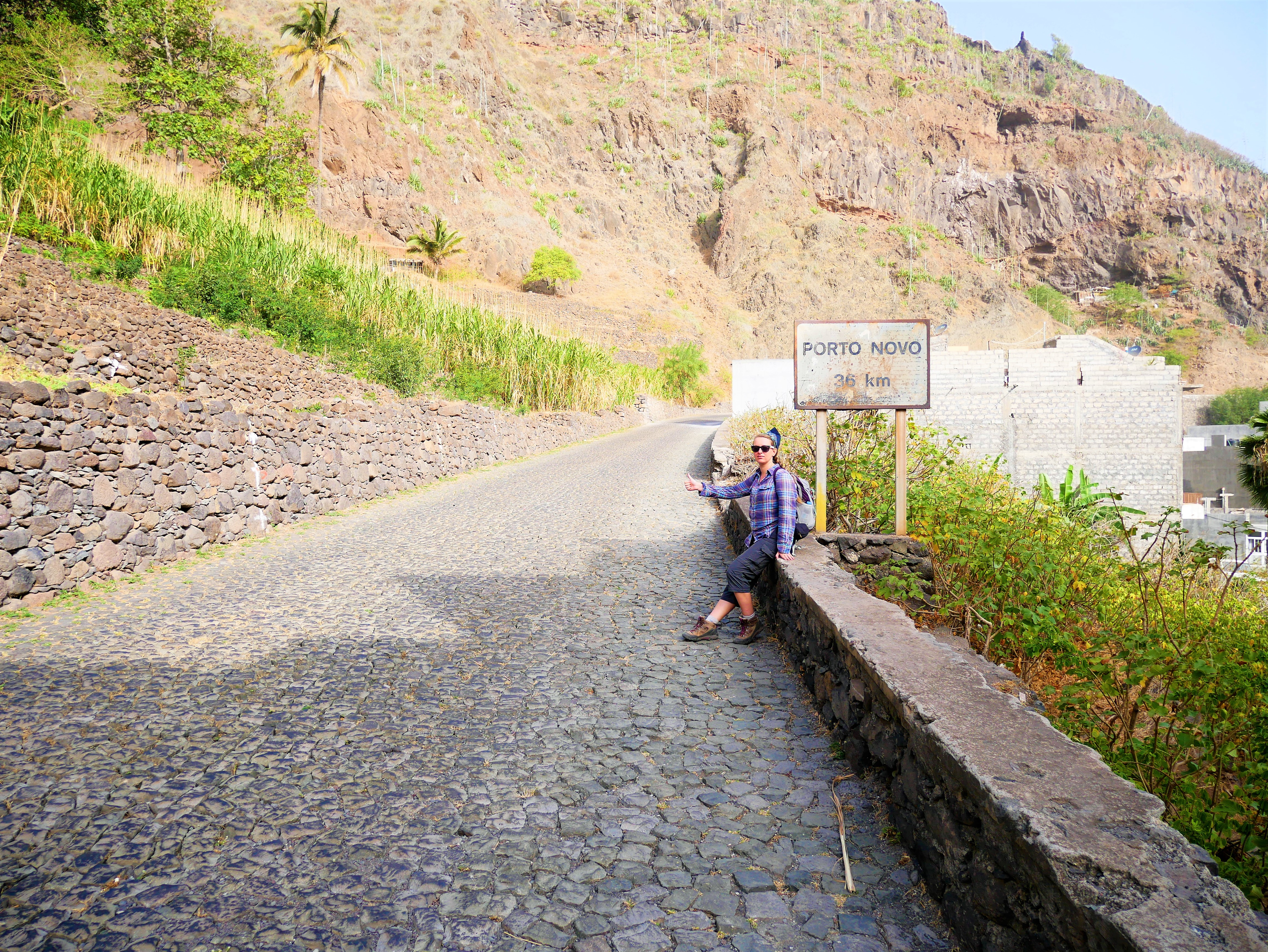
Hitchhiking is making private transportation public. ~ me
As you might know, hitchhiking works best with privately owned vehicles. While it’s not impossible to hitchhike a taxi or aluguer, you cannot assume your ride is for free. Even with privately owned vehicles, people might expect you to contribute a little for gas – even though this never happened to me in my time in Cabo Verde. If you want to make sure your ride is really a hitch, ask, clarify, and if it’s not for free, politely decline. Cabo Verdeans are generally very honest people who are conflict-averse. If you’re not hitchhiking and agree on a price and destination beforehand, people will stick to this. If there’s any confusion, this might be because of a miscommunication issue. People are not intent on screwing you over.
FAQ
When does hitchhiking make more sense?
The most important rule to keep in the back of your head is that waiting for an aluguer is basically the same as waiting for a hitch, depending on the time of day. In the early morning, it’s easier to catch a targeted aluguer. After the morning hours, the aluguer traffic becomes more irregular and it starts making sense to hitchhike. There is usually one aluguer vehicle that returns from smaller places to the bigger ones between 16:00 and sunset. After sunset there is almost no traffic unless there’s a ferry/flight still arriving .
Which vehicles are hitchable?
The more expensive-looking the vehicle, the bigger the chance it is free of charge. This applies to almost anywhere in the world.
I don’t have any hitchhiking experience, will I be OK?
Even if you have zero experience with hitchhiking, it might really pay off time-wise to finally make the leap and lift that thumb. As long as you keep to the ask, clarify, and humbly accept/politely decline rule, you should be fine. You should be more than fine! Riding with locals who are just on their commute is always a very memorable experience you’ll take home.
What do the first two letters mean on a license plate?
I’m so glad you noticed! The first two letters of a license plate indicate the island where the vehicle’s registration and/or import island. I figured this out myself, so I might be completely wrong on this. But yeah, it’s a pattern. The two-letter abbreviations are as followed:
- ST = Santiago
- SV = São Vicente
- SN = São Nicolau
- FG = Fogo
- BR = Brava
- SA = Santo Antão
- SL = Sal
I haven’t been to Maio and Boa Vista, but I think they’re MA = Maio and BV = Boa Vista. You can confirm/correct me by leaving a comment if you’ve been to these islands (I’d highly appreciate that).
So why do you see so many vehicles registered on other islands on your island? Because you can actually transport road vehicles onto (many, if not most) ferries. Inter-island shipping of vehicles isn’t so weird in Cabo Verde.
Drunk drivers
It only happened to me once (on Santo Antão island). I got into a vehicle with a man who behaved strangely and reeked of alcohol. I sat in the passenger’s seat next to him, while my partner sat in the back.
The government of Cabo Verde runs anti-drinking+driving campaigns, so they’re aware that this is a problem. In my opinion, the problem is not very huge or widespread,
Driving schools
In Cabo Verde, there are a lot of driving schools with many people taking lessons. They’re usually driving around town, usually around the only roundabout. To learn parallel parking, they use a designated area with poles to practice. This is because there aren’t
I’m mentioning driving schools because there’s only one other country in the world where I’ve seen so many driving school vehicles: Albania. It’s usually a phenomenon that pops up when governments start to prioritize road safety more and more. Rather than having lots of untrained, inexperienced drivers just hit the road like that, they encourage education. This form of regulation is a good thing!
Can I hitchhike the big TUI buses when they’re empty?
You can try!
Leave A Comment!
Was this article helpful to you? Do you have more questions to add that need answering? Leave a comment below and I’ll try to answer your question and maybe add it to the article! If you have any personal experiences taking land transport in Cabo Verde, feel free to share those in the comments.
Explore other articles about Cabo Verde










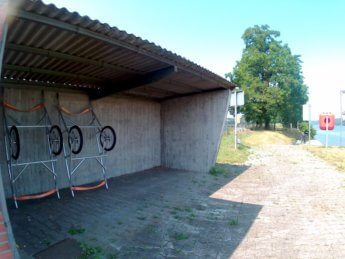







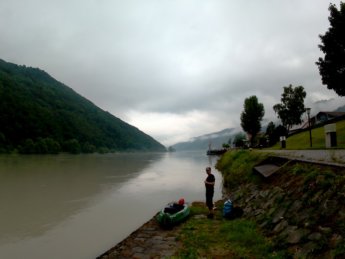


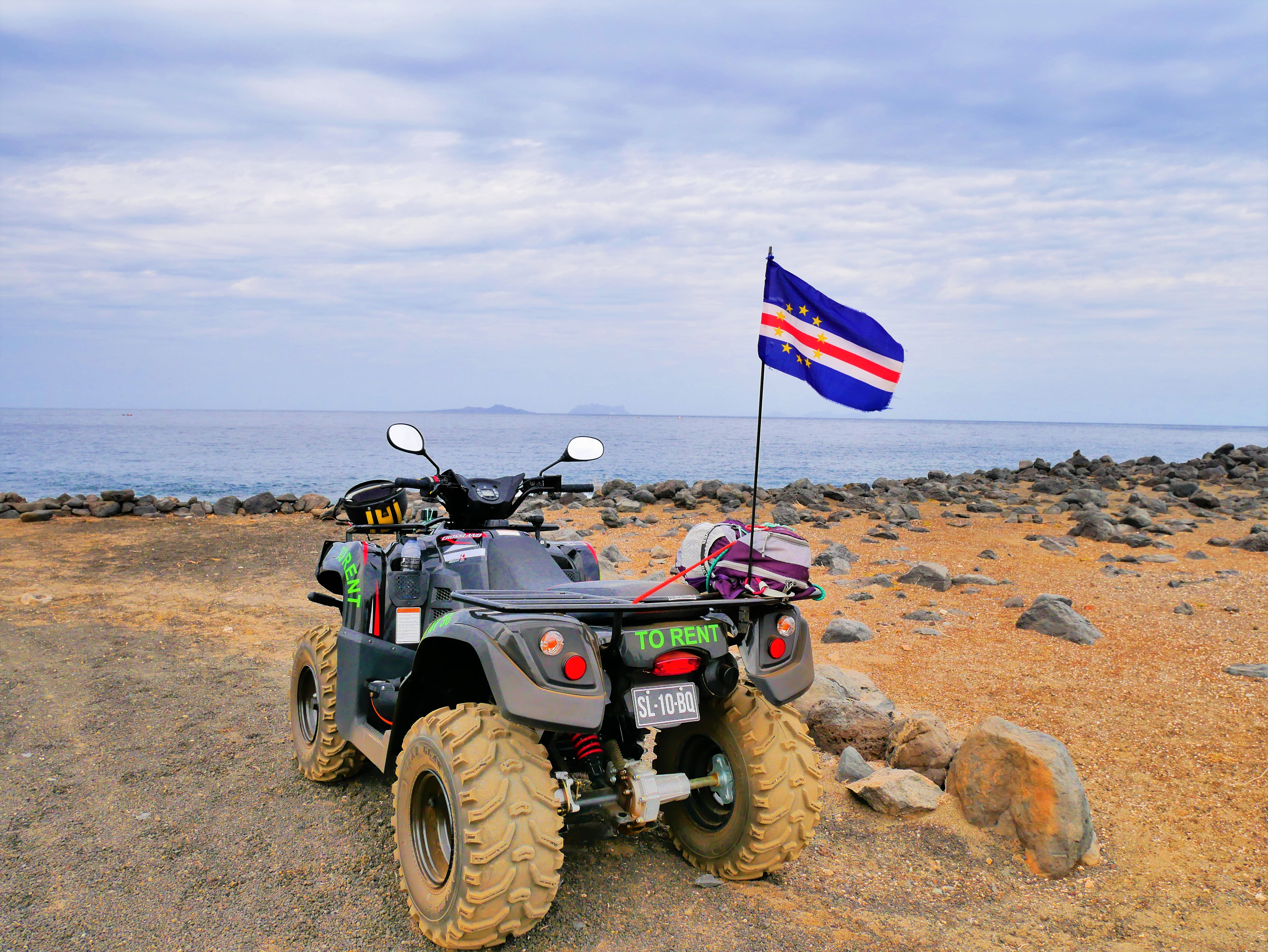
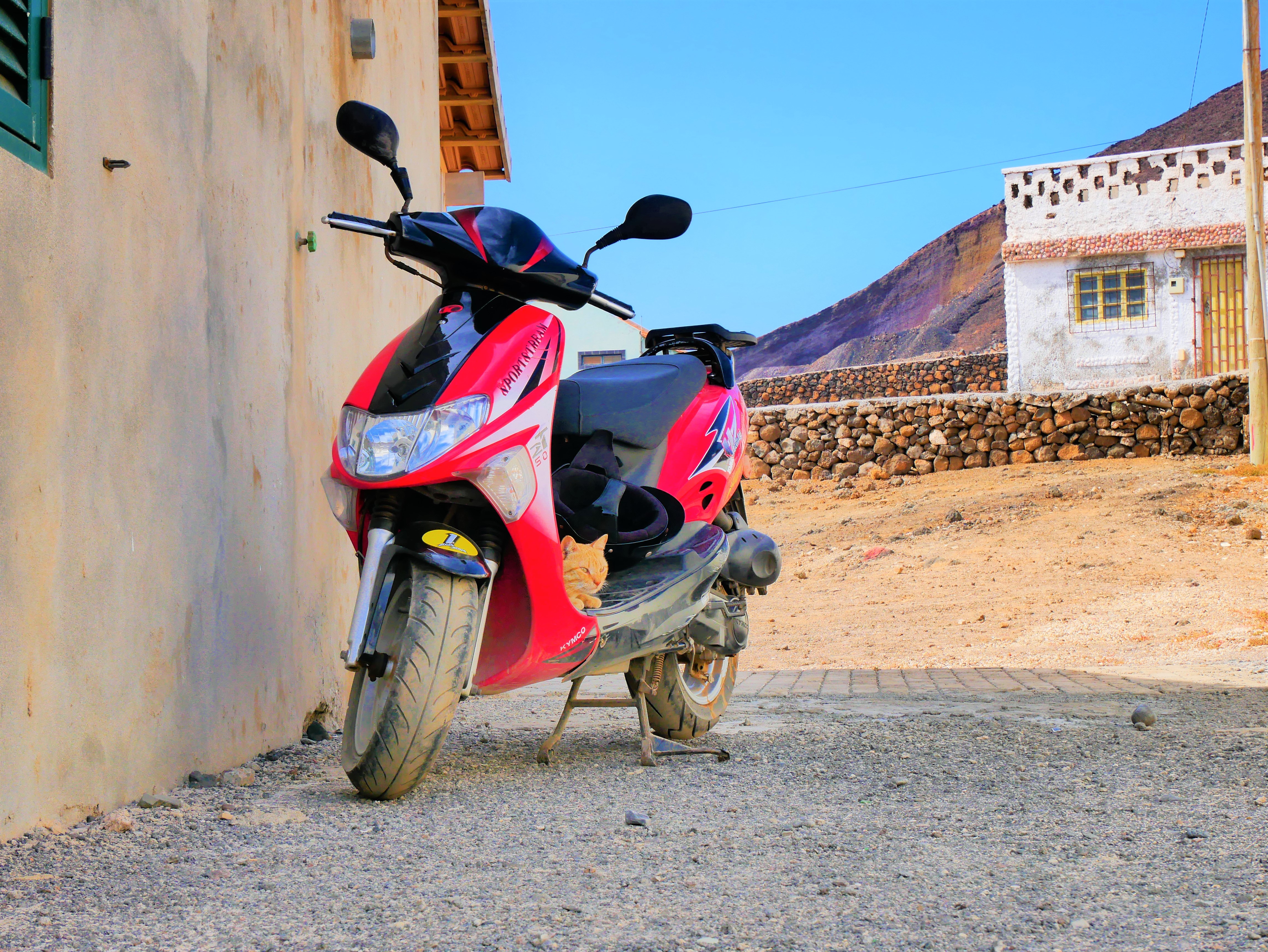
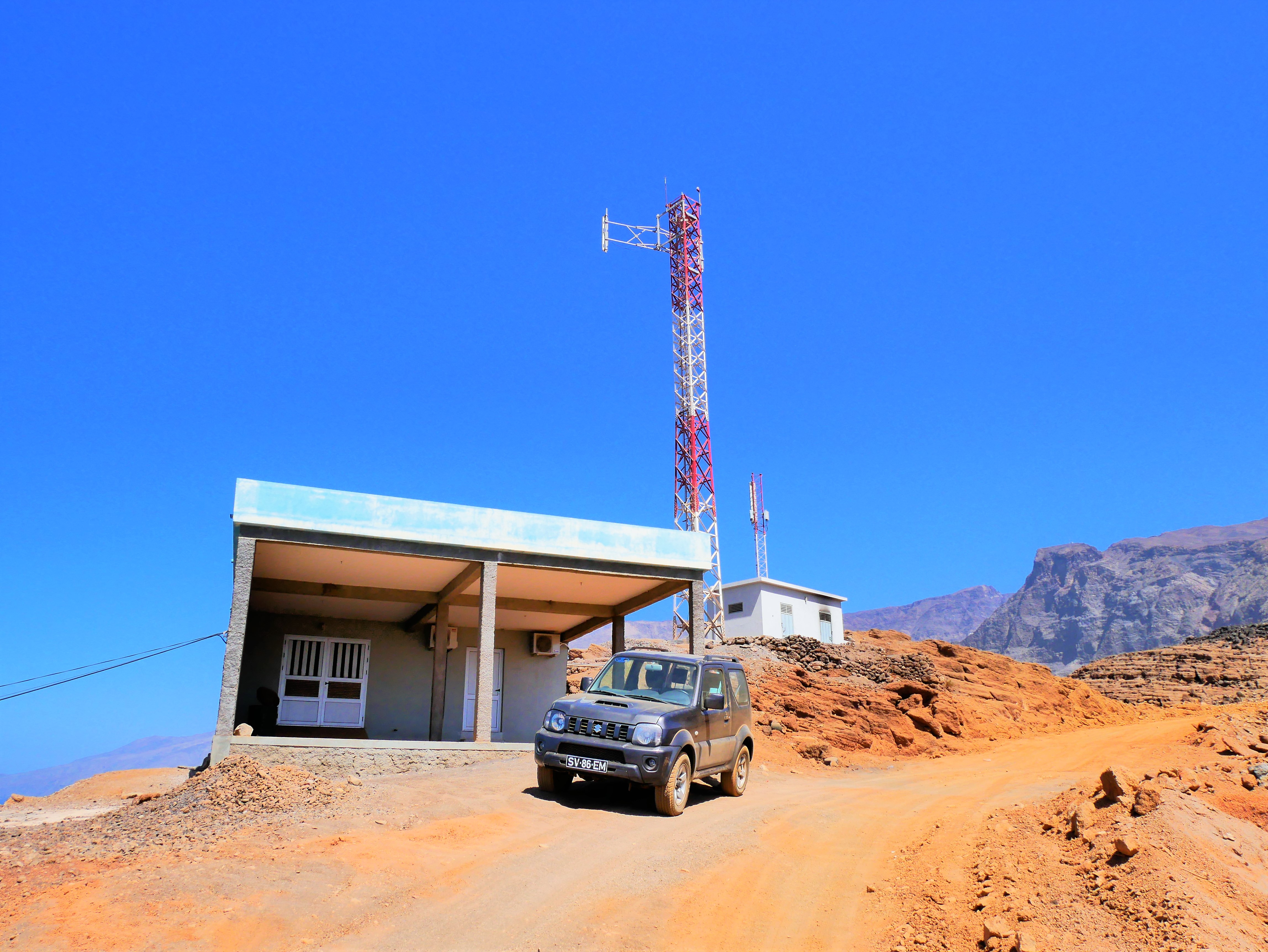






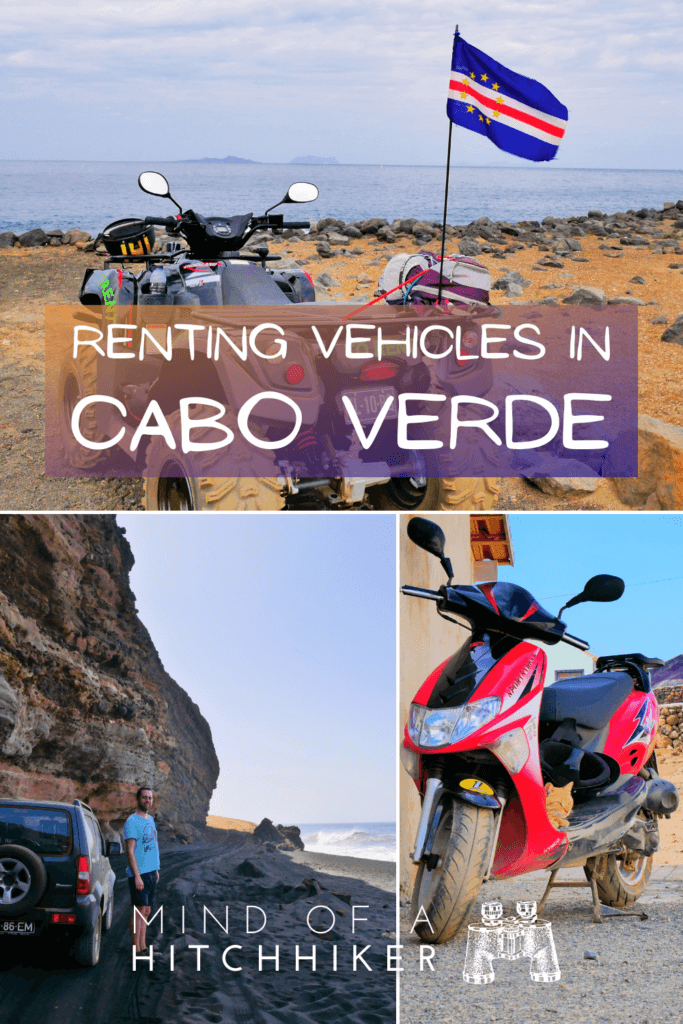




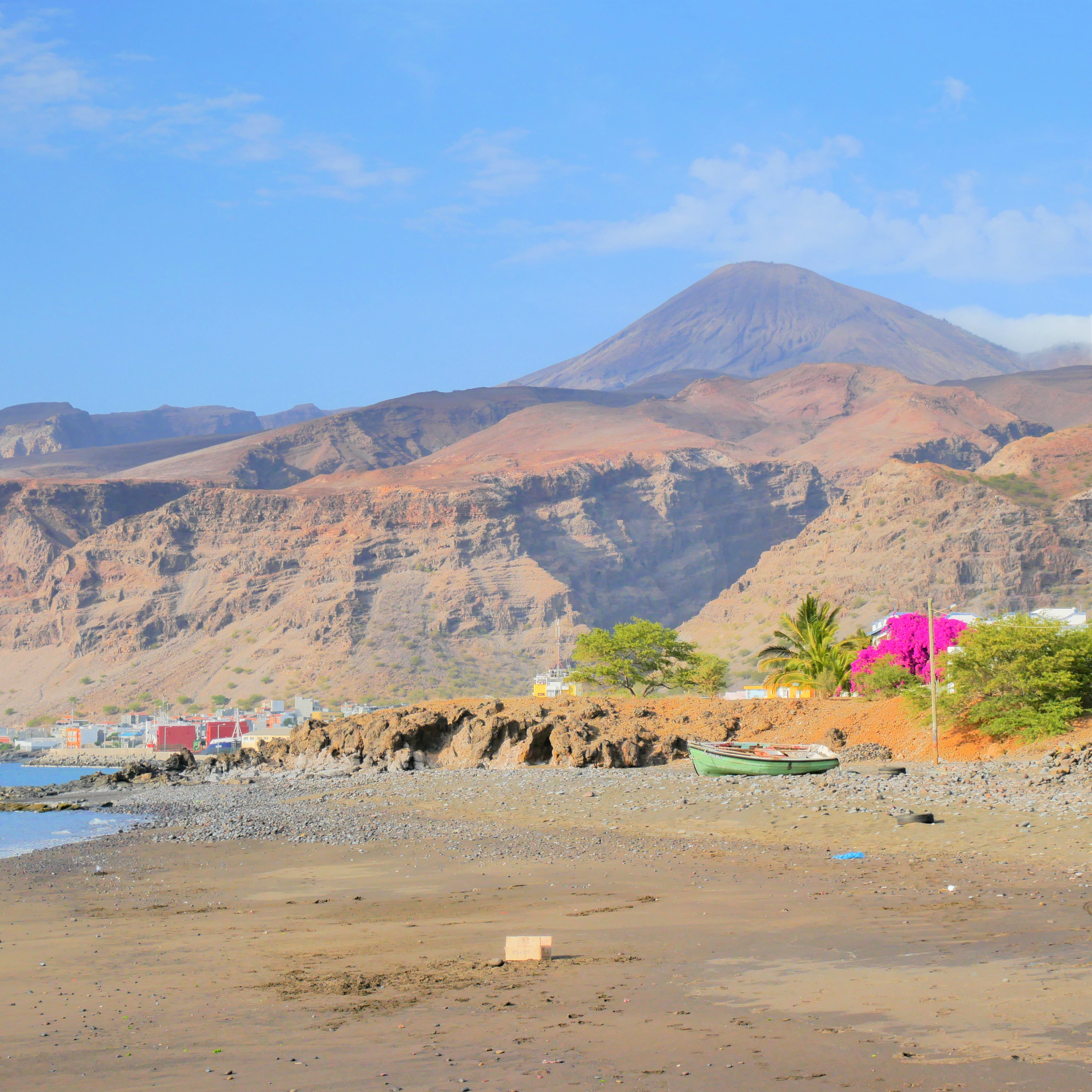
This was so helpful. Thank you.
Thank you for letting me know! 😀
Hi there, you say there are a few options to rent a scooter Praia, do you have any more information? I’m really struggling to find any info online, Ideally I’d like to rent one for the week we are in Santiago.
Thanks!
Hey Lee! Last year there was Alucar in Praia and maybe one or two others. We WhatsApped with Alucar to get one of their fancy three-wheeled scooters but they never responded. We stayed in Praia twice (first a few days, then we went to Tarrafal, then we returned to Praia) and there was plenty of time for them to answer. Your best chance is to maybe visit their shop near Gamboa beach and just ask them directly. I just saw that their entire website is down, so perhaps they just quit.
Another option is to message your host/hotelier on Airbnb/Booking to ask them if they can arrange one. A local has a greater chance of actually getting something done. I hope you’ll have more success with renting a scooter than we did! 🙂
Hello, Do you know ow how to get from Praia yo Cidade velha on bus or aluguer?
Thanjs
There are aluguers leaving from Sucupira Market in Praia all the time. It’s a very popular route!
Hi!
Thank you for all the helpful information.
I only have a morning to visit Cidade Velha from Praia and return after lunch to the Sucupira market area. Do you think I’ll catch a full aluger during the afternoon to get to Tarrafal?
I’m just worried because I’ve already bought accommodation for that night in Tarrafal.
Thanks!
Hey Maria!
I think if you’re back at the Sucupira market from your trip in the early afternoon, it will be mighty fine. You could also ask at the Sucupira market before you go to Cidade Velha whether there will be another bus to Tarrafal later. As long as you don’t have to waste time picking up your luggage in Praia, it should be doable.
Good luck and enjoy Cabo Verde!
Happy travels, Iris
Hi there,
so glad this came up in my searches. Plfnning a two week trip in July to Santo Antao (10 days) and Sao Vicente (5 days). We fly to Sao Vicente and then taking a ferry to Porto Novo. I estimate we’ll arrive to Santo Antao around 3 or 4 pm. Do you think there will be any of the aluguer available? We’re don’t travel with hand luggage only but also one large suitcase so I’m a bit worried about hitch-hiking (which I’m used to).
Thanks again for all the information provided! Wishing you many happy travels <3 <3 <3
Hey Spela! Arriving in the middle afternoon in Santo Antão shouldn’t be a problem to find an aluguer for you and your large suitcase. It’s still quite early in the day and there’s almost always one aluguer available in any direction. The bigger issue is that the São Vicente ferry comes so often that if the aluguer hasn’t filled up completely yet, they might want to wait for another cycle for more people to arrive. Patience is key!
Enjoy your trip to Cabo Verde!